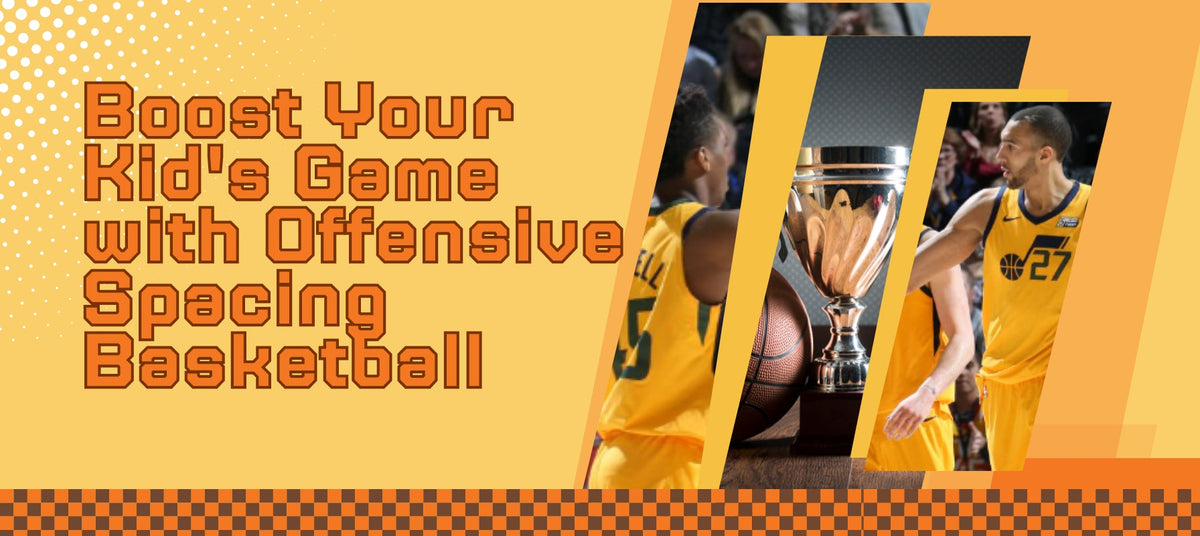
Boost Your Kid's Game with Offensive Spacing Basketball
|
|
Tempo di lettura 4 min
|
|
Tempo di lettura 4 min
Coaches at every level can attest – few things are as crucial in offensive basketball as solid offensive spacing. It's like that old saying; you can’t make an omelet without breaking a few eggs. Sometimes your players crowd the court like they’re all trying to get into the same selfie. But, nailing down effective offensive spacing is about way more than scattering players around the basketball court. It's about understanding the “why” behind those positions and how they can create scoring opportunities against even the toughest defenses.
When players are clustered together, it creates easy opportunities for defenders to guard multiple players at once. Think about it - double teams become a breeze, passing lanes shrink faster than my patience during a timeout, and good luck finding a clean shot. Proper offensive spacing creates headaches for the defense and opens up options like a well-run fast break.
Maximizing the distance between offensive players, the offense can take advantage of player movement and create better passing options. This forces the defense to cover more ground, leading to defensive breakdowns and vulnerabilities. Good spacing principles force defenses to make tough choices, creating advantages that lead to higher-percentage shots, more assists, and more points on the board.
Solid offensive spacing transforms your offense from predictable to potent because it forces defenses to make tough choices. Good spacing principles create advantages that lead to higher-percentage shots, more assists, and more points on the board.
While the specific spacing formation might differ slightly depending on your offensive scheme (more on that later), certain fundamental principles hold across all successful offensive spacing strategies in basketball.
A common coaching point you’ll often hear courtside is the “15-foot rule.' When setting up your offensive spacing, players should strive to be at least 15 feet away from each other. Players understand that this rule becomes especially important when initiating an offense. This doesn’t need to be measured out with a tape measure at midcourt, it’s more of a guideline to visualize spacing. The goal is to provide enough room to operate without clogging the lane and minimizing those pesky double-teams. It is recommended that players stand at least 10 to 12 feet from each other as noted in Basic Basketball Spacing Drill.
This might seem obvious, but you’d be surprised how often players gravitate towards that comfy spot right in front of the basket. This isn’t your buddy's couch – we gotta use the WHOLE floor. Encourage players to utilize the corners for open three-point attempts or use the triple threat position to attack the basket.
Offensive spacing is also about understanding those sneaky gaps that naturally form in basketball. The baseline drive is a great example. Players can use that space between the defender and the baseline to create their shots or open up opportunities for teammates by collapsing the defense. When a player catches the ball on the wing, the coach yells for them to 'attack the baseline.'
Offensive spacing comes in various flavors to cater to different strengths. Let’s unpack some common formations that many coaches employ, keeping in mind these can be tweaked and customized:
The 4-Out 1-In offense is widely utilized in today’s game because it balances spacing and inside presence. Think of it like this: you've got your four shooters spread out around the perimeter like they’re at the four corners of a poker table and one versatile big man holding down the paint. Whether your big man has a feathery touch around the rim or a knack for dishing out assists like a point guard in disguise, the 4-Out 1-In gives him space to work his magic.
With shooting threats dotting the perimeter, the 4-Out 1-In does two things incredibly well: It creates those driving lanes that keep defenders on their toes and, because there’s respect for those outside shots, it provides opportunities for that big fella in the paint. You can use the 4-out positioning which is a feature of the Wildcat's offense.
In the 5-Out system, all five players camp out beyond the three-point line. This formation stretches the floor as wide as possible, creating wide-open driving lanes and opportunities for offensive rebounds and kick-out threes. This formation often calls for bigs who can stretch the floor by knocking down those long-range bombs. However, the offensive possibilities are numerous.
Effective offensive spacing isn't just a trend, it's the heartbeat of a well-oiled offense. From the youth leagues to the NBA, those coaches who prioritize spacing give their teams an enormous strategic advantage. Understanding these core principles, common formations, and drills allows coaches to teach players how to improve offensive flow, enhance player development, and watch as the scoreboard reflects those efforts.
Spacing Basketball. Spacing Basketball.Spacing Basketball. Spacing Basketball. Spacing Basketball. Spacing Basketball. Spacing Basketball. Spacing Basketball. Spacing Basketball. Spacing Basketball. Spacing Basketball. Spacing Basketball. Spacing Basketball. Spacing Basketball. Spacing Basketball. Spacing Basketball. Spacing Basketball. Spacing Basketball. Spacing Basketball. Spacing Basketball. Spacing Basketball. Spacing
This site requires cookies in order to provide all of its functionality.